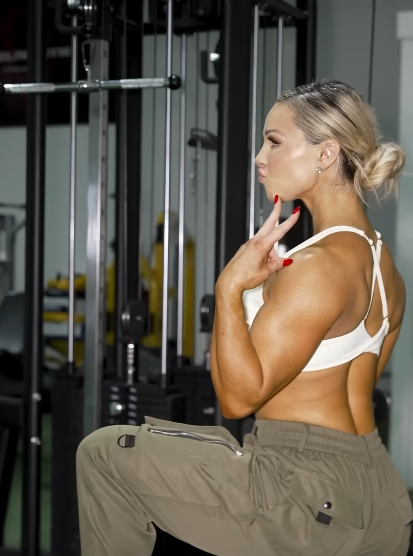
Building a strong, sculpted upper body requires a strategic approach to training, and few muscle pairings work together as effectively as the back and biceps. Since many back exercises naturally engage the biceps, training them in the same workout allows for maximum efficiency and muscle growth. Whether you’re looking to improve strength, enhance aesthetics, or boost overall athletic performance, a well-structured back and biceps workout is essential.

Why Train Back and Biceps Together?
The back and biceps work synergistically during pulling movements. Every time you perform an exercise like a pull-up or a row, your biceps assist in the motion. By training these muscle groups together, you can:
- Maximize Efficiency: Since both muscle groups are activated in similar movements, you can reduce workout time while still targeting them effectively.
- Improve Strength: Strengthening your back supports better posture and performance in various sports and daily activities.
- Enhance Muscle Growth: Training related muscle groups together helps create a balanced and proportionate physique.
- Increase Grip Strength: Stronger back and biceps improve grip, which is crucial for lifting heavier weights and excelling in other compound exercises.

Anatomy of the Back & Biceps
Back Muscles:
- Latissimus Dorsi (Lats) – The large, wing-shaped muscles that give your back width and contribute to the V-tapered look.
- Trapezius (Traps) – Located in the upper back and extending down the spine, the traps help with posture and shoulder stability.
- Rhomboids – Situated between the shoulder blades, rhomboids assist in retracting and stabilizing the scapula.
- Erector Spinae – The deep muscles along the spine that support posture and lower back stability.
Biceps Muscles:
- Biceps Brachii – The main muscle of the upper arm, responsible for elbow flexion and forearm rotation.
- Brachialis – Lies beneath the biceps and contributes to arm thickness.
- Brachioradialis – A forearm muscle that assists in bending the elbow.
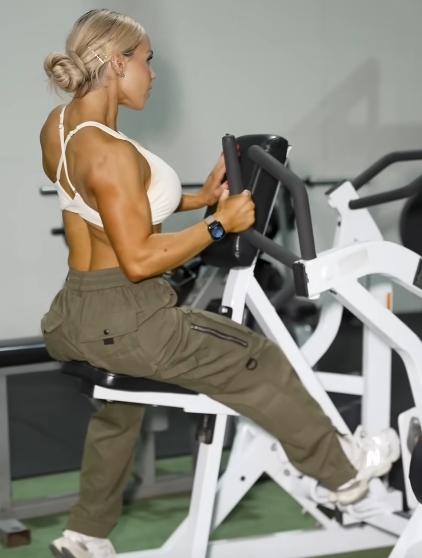
Back & Biceps Workout Routine
To build strength and size in the back and biceps, it’s important to include a mix of compound and isolation exercises. Compound movements target multiple muscle groups, while isolation exercises focus on specific areas to enhance definition and detail.
Warm-Up (5–10 minutes)
Before jumping into heavy lifting, warming up is crucial to prevent injury and optimize performance. Include:
- Light cardio (rowing machine or jump rope)
- Dynamic stretches (arm circles, torso twists)
- Resistance band pull-aparts and shoulder mobility drills
Workout Plan
Perform 3–4 sets of each exercise with 8–12 reps for muscle growth (hypertrophy) or 4–6 reps for strength gains. Rest for 30–90 seconds between sets depending on intensity.
1. Pull-Ups (Compound, Bodyweight or Weighted)
- Primary Muscles: Lats, biceps, traps
- Execution: Grip a pull-up bar slightly wider than shoulder-width, pull yourself up until your chin clears the bar, then lower slowly.
- Variation: Assisted pull-ups or lat pulldown for beginners.
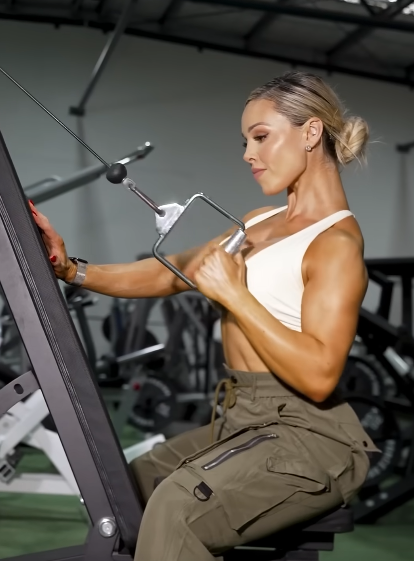
2. Bent-Over Barbell Rows
- Primary Muscles: Lats, traps, rhomboids, lower back, biceps
- Execution: With a slight bend in your knees, hinge at your hips and keep your back straight. Pull the barbell towards your torso and squeeze your shoulder blades.
- Tip: Avoid rounding your lower back to prevent injury.
3. Single-Arm Dumbbell Rows
- Primary Muscles: Lats, rhomboids, biceps
- Execution: Place one hand on a bench for support, pull a dumbbell towards your ribcage, then lower it slowly.
- Tip: Keep movements controlled to maximize muscle engagement.
4. Lat Pulldown
- Primary Muscles: Lats, biceps, traps
- Execution: Grip the bar slightly wider than shoulder-width, pull it down to your chest, then slowly return it to the starting position.
- Tip: Avoid using momentum; focus on controlled movement.
- Primary Muscles: Lats, traps, biceps, rhomboids
- Execution: Sit with knees slightly bent, pull the handle towards your torso, squeeze the shoulder blades, then return slowly.
- Tip: Keep your chest up and avoid leaning too far back.
6. Barbell or Dumbbell Bicep Curls (Isolation)
- Primary Muscles: Biceps brachii, brachialis
- Execution: Keep elbows close to the body, curl the weight up, squeeze at the top, then lower slowly.
- Tip: Avoid swinging the weight; focus on strict form.
7. Hammer Curls (Isolation)
- Primary Muscles: Biceps, brachialis, forearms
- Execution: Hold dumbbells in a neutral grip (palms facing inward) and curl them up.
- Tip: Helps develop thicker arms by targeting the brachialis muscle.
8. Face Pulls (For Rear Delts & Traps)
- Primary Muscles: Rear delts, traps, rhomboids
- Execution: Use a rope attachment on a cable machine, pull towards your face, keeping elbows high.
- Tip: Great for shoulder health and posture improvement.
9. Concentration Curls (Isolation for Peak Development)
- Primary Muscles: Biceps brachii
- Execution: Sit on a bench, support your elbow on your thigh, and curl a dumbbell upward with full control.
- Tip: Helps enhance the biceps peak.
Cool Down & Stretching (5–10 minutes)
- Child’s Pose (for back flexibility)
- Cat-Cow Stretch (spinal mobility)
- Cross-Body Shoulder Stretch (delts and traps)
- Biceps Stretch (against a wall)
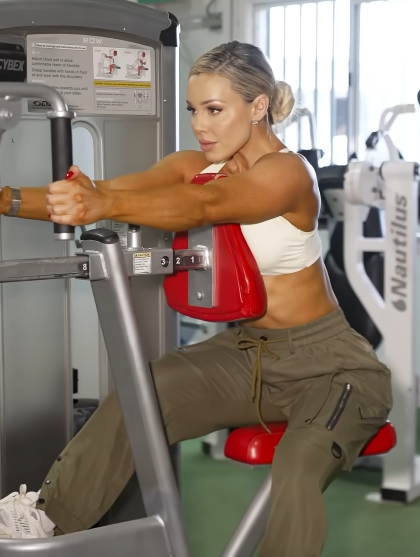
Training Tips for Maximum Results
- Progressive Overload: Increase weights gradually to challenge your muscles and stimulate growth.
- Mind-Muscle Connection: Focus on engaging the target muscles rather than just moving the weight.
- Proper Form First: Avoid using excessive weight if it compromises technique.
- Grip Strength Matters: Stronger grip leads to better back development. Use chalk or straps if necessary but aim to strengthen your grip naturally.
- Recovery is Key: Muscles grow outside the gym. Ensure proper rest, hydration, and nutrition for optimal results.
- Balanced Diet: Consume enough protein and healthy carbs to support muscle repair and energy levels.

Common Mistakes to Avoid
- Using Momentum: Swinging weights reduces muscle engagement and increases injury risk.
- Neglecting Full Range of Motion: Partial reps limit growth potential.
- Skipping Warm-Up and Cool Down: Not preparing muscles properly can lead to strains and stiffness.
- Overtraining Biceps: Since biceps assist in many pulling movements, avoid excessive direct biceps work to prevent overuse.
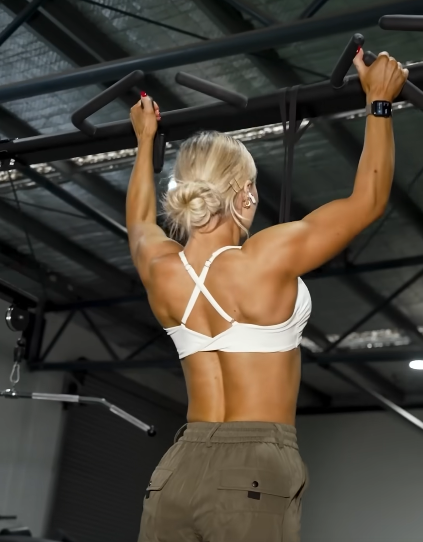
Conclusion
Training back and biceps together is a powerful strategy for building upper body strength, improving aesthetics, and enhancing overall athleticism. By incorporating a mix of compound and isolation exercises, focusing on proper form, and maintaining consistency, you can achieve impressive results. Whether you’re a beginner or an advanced lifter, this workout structure will help you develop a strong, sculpted back and well-defined biceps over time. So grab those weights, engage your muscles, and get ready to flex with confidence!



